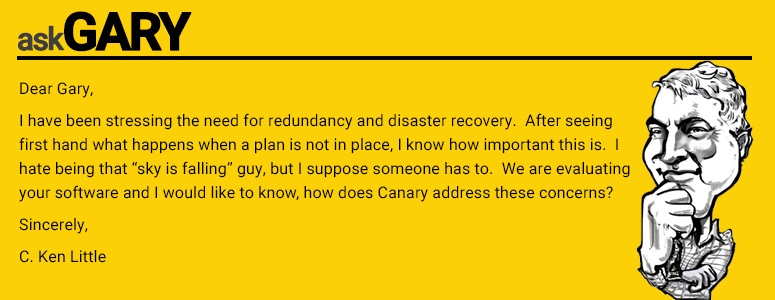The tenth edition of a weekly Question and Answer column with Gary Stern, President and Founder of Canary Labs. Have a question you would like me to answer? Email askgary@canarylabs.com
Dear Mr. Little,
There is certainly nothing wrong with being prepared for "worst case scenarios" and what you are working toward is certainly a best practice. Many of our customers selected Canary due to the flexibility of our architecture which greatly lends itself to redundancy as well as disaster recovery.
For Canary, redundancy starts at the logging process. The Canary Logger is unlicensed software, allowing you to create as many logging sessions as you would like, including duplicate ones. Since the Canary Historian receives data on a "first come, first stored" basis, it has no issue with duplicate data feeds. The Canary logger can point to a single or multiple historians. This means not only can you create duplicate logging sessions, but you can also direct each logging session to redundant historians.
To ensure no data loss when network troubles strike, the Canary Sender and Receiver Service uses store and forward technology. This means that if communication is lost between the logging machine (Sender Service) and the historian server (Receiver Service), the Sender Service will cache data to local disk. When communications return, the cached data is transferred to the historian in time sequence order and removed from the Sender Service.
For disaster recover, the Canary Historian also has a Mirror Service. The Mirror Service allows you to pull data from one historian to another. This data extraction can be scheduled based on time interval or time of day. It can also occur in real time. Many of our clients find the Mirror Service useful for sharing data across the enterprise as well as for disaster recovery.
Finally, Canary makes it easy to back up your historical files using third party tools. Since historical files are saved in an accessible Window's directory and are easily identifiable, you should have no problem scheduling routine backups.
I hope this helps you plan for the unforeseen. Feel free to contact me or my staff with any further questions.




